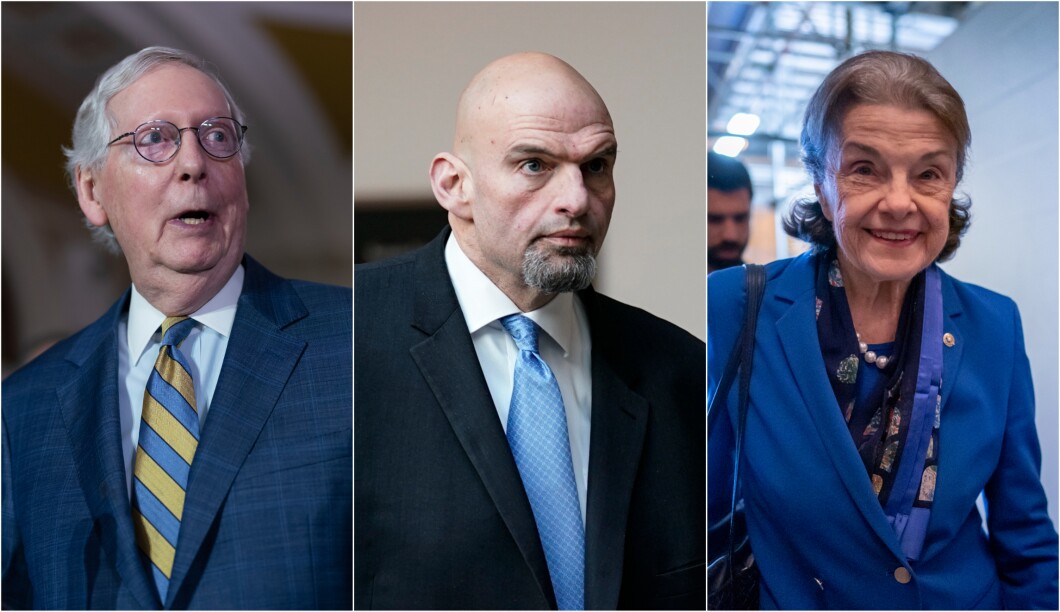
The Senate has had attendance problems in the last seven months, with at least one senator missing from the roll call in every vote since August 2022.
The 51-49 Democratic-held Senate has been reduced to a 49-48 Senate thanks to absences by both parties, with that number fluctuating from day to day, causing roadblocks in the upper chamber of Congress.
REPUBLICANS DECRY POSSIBLE TRUMP INDICTMENT AS ‘ABUSE OF POWER’
Senate Minority Leader Mitch McConnell (R-KY) and Sens. John Fetterman (D-PA) and Dianne Feinstein (D-CA) have no timetable for when they plan to return to the Senate. McConnell, 81, is recovering from a concussion suffered during a fall. Fetterman, 53, is receiving treatment for depression, and Feinstein, 89, is receiving treatment for shingles.
McConnell’s absence has required Sen. John Thune (R-SD) to run the GOP conference with assistance from McConnell’s aides, while Sen. Bob Casey’s (D-PA) staff has had to fulfill constituent requests and work on legislation for Fetterman, per Politico.
The long-term absences have led to some senators feeling less obligated to show up to some hearings and votes, as there is no critical legislation being debated.

“People feel maybe a little bit more flexibility than they would if we were doing really consequential legislating right now. Then you’ve got folks who have just serious either health or family health issues, and I think you gotta respect that,” Thune said.
Feinstein’s absence has caused some judicial nominations to be held up because of her position on the Senate Judiciary Committee, according to the outlet. She was released from the hospital earlier this month, but it is currently unknown when she will return to her Senate duties.
McConnell was reelected in 2020 and will not be up for possible reelection again until 2026. Fetterman was elected to his seat last November but has spent significant time away from the upper chamber since being sworn in in January due to him receiving treatment for his depression, along with other health complications.
Feinstein announced she would not be seeking reelection in 2024, opening the door for a battle between California Democrats for the seat she has held since 1992.
CLICK HERE TO READ MORE FROM THE WASHINGTON EXAMINER
Democrats hoped the 51-49 majority they won in the 2022 midterm elections would allow for more judicial nominees and legislation to get passed after two years of a 50-50 Senate, but long-term absences have halted those plans.
The Senate map for the 2024 election favors the GOP, as Democrats are on defense in numerous battleground or Republican-leaning states, including Montana, Ohio, and West Virginia.




